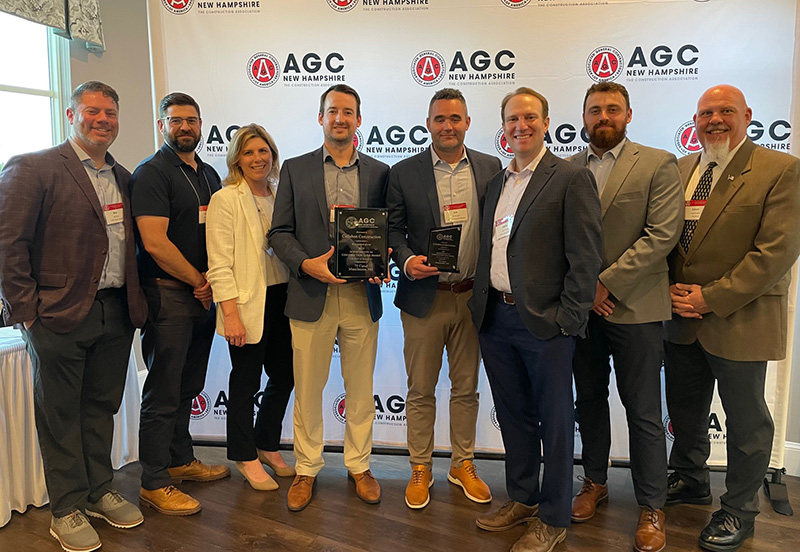News: Construction Design & Engineering
Posted: February 14, 2008
Successful renovation is measured in many ways, but generally in dollars, sense and design appeal
Just about once every two years, my good friend, Jeff Keller, associate publisher of the New England Real Estate Journal, rings me up and asks if I would be interested in writing an article on renovation and restoration for their Construction, Design & Environmental issue. Maybe I'm the only guy he knows that has done both for the past 35 years or more; or maybe it's because we went to Penn State together . . . who knows.
I actually semi-retired three years ago and turned the day-to-day reins of our commercial design-build/construction company over to my three sons . . . so I could have ducked. But Jeff was too persuasive . . . so here goes.
Over the past three decades plus and 500-600 restoration and renovation projects later, we have learned that there are several steps the client and the design-build team must follow for a renovation to be a success. Success can be measured in many ways, but generally it is measured in dollars and sense (not cents), and aesthetic design appeal.
The first step to a successful project is selecting an experienced design-build team. Take a look at their work. Have they handled similar type projects successfully? Once the design-build team is in place, they should be asked to review the building's existing conditions; i.e., mechanical, electrical, plumbing, fire protection and structural, typically referred to as MEPS. Require a client/team walk-through . . . it will come in handy for everyone later as the project begins to take shape.
Most renovations and restorations involve buildings that are 30 to 100 years old or more; therefore, code compliance issues will almost certainly need to be addressed. For example: handicap access (elevators may be required), fire protection (alarms and sprinklers may be required), etc., etc. The design-build team should prepare a detailed budget estimate before any architectural drawings are started. This could be the first 'go' or 'no go' for the project.
The second step involves further code/bylaw review, programming, space planning and preliminary architectural drawings. (Note: There is no need to spend real A & E dollars until one is through step I.) Step II will merge existing conditions with the client's future space requirements. The approved preliminary (schematic) plans will again be re-estimated by the design-build team and be reviewed in detail with the client.
The client will now have to make an economic decision from a lease rate, rate of return, or whatever measuring stick he or she chooses. Now, let's assume the project is a 'go', because if it was not, the story would end here . . . .
Renovation projects that proceed after well thought out preliminary drawings, a detailed scope of work and a good budget estimate are on their way to becoming a success story. The client, as well as the design team, should clearly understand the program's goals and objectives.
There are many methods that an experienced design-build team can use to help assure a project's success, but one technique we have used over and over again successfully is 'value engineering' (VE). VE is a method of measuring function and material selection to the cost or return on investment (ROI).
We have all seen renovation projects that were beautifully designed, but failed due to poor material or systems selection that made the project a bear to maintain, heat/cool, or all of the above.
VE vs. Cost. As a rule of thumb, we will recommend specific systems or material upgrades to our clients if the added cost can be recovered (payback) in five years or less. For example: the design calls for shiplap painted cedar wood siding 3.5 inches to the weather. We all know that wood siding needs to be repainted every five to eight years or less, depending on the exposure and climate. There are now new man-made products available, such as 'Fypon' and 'Hardiboard', that look like wood siding but are superior to wood (termite and mildew resistant and require much less maintenance). An experienced design-build team can recommend dozens of suggestions for your next project that can save money, extend the project's useful life and reduce maintenance expenses.
Finally, a successful renovation/restoration project brings pride to the client, design-build team, the client's customers and the community alike. I need only to point to Flagler College and St. George St. in St. Augustine, Fla. where we presently reside; or to Andover, Lowell, Concord, Williamstown, etc., Mass.; or Newport, R.I.; (homes to many of our past restoration projects) . . . as prime examples of success stories with long histories.
Chuck Snell is the founder of New England Design Associates, Inc., Worcester.
MORE FROM Construction Design & Engineering
Nobis Group awards Robinson and Moreira STEM scholarships
Concord, NH Nobis Group, a 100% employee-owned consulting firm specializing in engineering and environmental solutions across the Northeast, has named the recipients of its 2025 STEM Scholarship: Andie Moreira of

Quick Hits
Columns and Thought Leadership

Careers in Construction Month focus on training and safety - by Joe Camilo
October is Careers in Construction Month, and rarely has it been more consequential. According to our chapter’s national parent organization, the construction industry needs to attract half-a-million new workers in the coming year to meet demand. Addressing that need is a huge job, but we at ABC MA are trying to do our part.

The rise of incubators and co-working spaces: The latest in life sciences - by Matt Combs
In recent years, the life science industry has witnessed a shift in how companies operate and innovate. One of the key driving forces behind this transformation is the emergence of incubators and co-working spaces specifically tailored to meet the unique budget and schedule needs of startups.

Ask the Electrician: Is summer a prime time for commercial electrical maintenance?
The answer is “Yes!” While January marks the official new year, many businesses view September as a fresh start. This makes summer an ideal time for commercial property owners to schedule long-term electrical maintenance projects.

The design-build advantage: Integrated interior design solutions - by Parker Snyder
When it comes to corporate interior spaces for both commercial and industrial projects, partnering with a design-build firm with in-house interior design services can offer clients many benefits. Unlike traditional delivery methods where interior designers operate independently from the design and construction teams, often creating a longer project timeline as cost negotiations and revisions ensue







